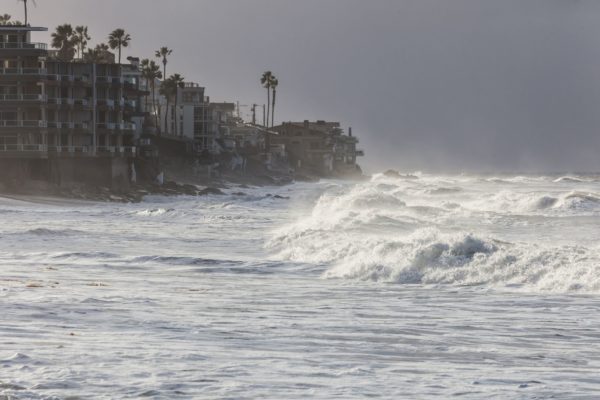Along with a warming climate and intensified human activities, recent water storage in global landlocked basins has undergone a widespread decline. A new study reveals this decline has aggravated local water stress and caused potential sea level rise.
The study, Recent Global Decline in Endorheic Basin Water Storage, was carried out by a team of scientists, including Jay Famiglietti, director of the Global Institute of Water Security, Canada 150 research chair in hydrology and remote sensing at the University of Saskatchewan and co-author of the study. It appears in the current issue of Nature Geoscience.
“The water losses from the world’s endorheic basins are yet another example of how climate change is further drying the already dry arid and semi-arid regions of the globe. Meanwhile, human activities such as groundwater depletion are significantly accelerating this drying,” said Famiglietti.
Using gravity observations from NASA/German Aerospace Center’s Gravity Recovery and Climate Experiment, or GRACE, satellites, the researchers quantified a net water loss in global endorheic basins of approximately 100 billion tonnes of water per year since the start of the current millennium.
“Water resources are extremely limited in the continental hinterlands where streamflow does not reach the ocean,” said Jida Wang, a Kansas State University geographer and the study’s lead author.
This endorheic water loss has dual ramifications, according to the researchers. Not only does it aggravate water stress in the arid endorheic regions, but it could also contribute to a significant factor of global environmental concern: sea level rise. Sea level rise is a result of two main causes: thermal expansion of sea water as a result of increased global temperature, and additional water mass to the ocean.
“When water storage in endorheic basins is in deficit, the reduced water mass doesn’t disappear. It was reallocated chiefly through vapor flux to the exorheic system. Once this water is no longer landlocked, it has the potential to affect the sea level budget,” said Chunqiao Song, researcher with the Nanjing Institute of Geography and Limnology, Chinese Academy of Sciences, and a co-lead author of the study.
Despite an observation period of 14 years, the endorheic water loss equals an additional sea level rise of 4 millimeters, the study found. The researchers said this impact is nontrivial. It accounts for approximately 10 per cent of the observed sea level rise during the same period; compares to nearly half of the concurrent loss in mountain glaciers, excluding Greenland and Antarctica; and matches the entire contribution of global groundwater consumption.
In endorheic North America, including the Great Basin of the U.S., a drought-induced soil moisture loss was likely responsible for most of the regional water loss. Despite a lesser extent, the surface water loss in the Great Salt Lake and the Salton Sea was at a substantial rate of 300 million tons per year, which was partially induced by mineral mining and diversion-based irrigation.
Wang said the team wants to convey three takeaway messages from their research.
“First, water storage in the endorheic system, albeit limited in total mass, can dominate the water storage trend in the entire land surface during at least decadal timescales,” Wang said. “Second, the recent endorheic water loss is less sensitive to natural variability of the climate system, suggesting a possible response to longer-term climate conditions and human water management.
“Third, such a water loss in the endorheic system has dual ramifications, both to regional water sustainability and to global sea level rise,” he said. “These messages highlight the underrated importance of endorheic basins in the water cycle and the need for an improved understanding of water storage changes in the global hinterlands.”









